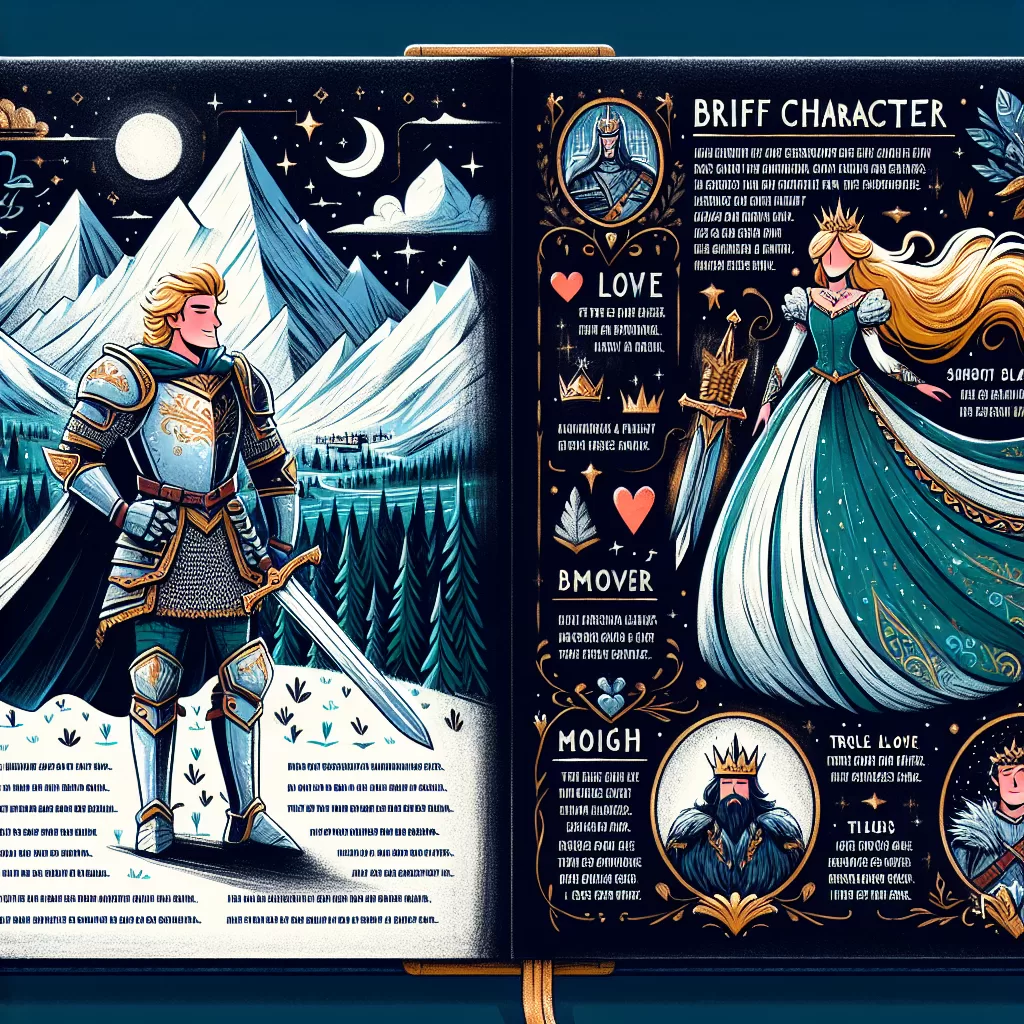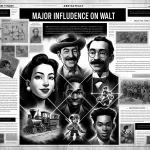-
Table des matières
“The Princess Bride,” written by William Goldman, is a fantasy adventure novel that combines elements of romance, humor, and satire. The story follows the journey of Buttercup, a beautiful young woman, and her true love, Westley, as they navigate a world filled with danger, intrigue, and whimsical characters. The narrative is framed as a story being read by a grandfather to his sick grandson, adding a layer of meta-commentary on storytelling itself. Key themes include the nature of true love, the battle between good and evil, and the absurdity of life. The characters, such as the cunning Inigo Montoya, the giant Fezzik, and the villainous Prince Humperdinck, each contribute to the rich tapestry of the tale, making it a beloved classic that explores the complexities of love and adventure.
Princess Bride Book Summary
“The Princess Bride,” a novel by William Goldman, is a captivating tale that intertwines adventure, romance, and humor, all while presenting a unique narrative style that engages readers from the outset. The story is framed as a retelling of a classic fairy tale, which Goldman claims to have abridged from the fictional work of S. Morgenstern. This clever narrative device sets the stage for a whimsical exploration of love and heroism, while simultaneously inviting readers to question the nature of storytelling itself.
At the heart of the narrative is the love story between Buttercup, a beautiful young woman, and Westley, a humble farm boy. Their romance is initially pure and idyllic, characterized by Buttercup’s unwavering affection for Westley, who leaves to seek his fortune. However, tragedy strikes when Westley is reported dead at the hands of the Dread Pirate Roberts, leaving Buttercup heartbroken. In her despair, she reluctantly agrees to marry Prince Humperdinck, the ruler of the fictional land of Florin, despite her lingering feelings for Westley.
As the plot unfolds, the story takes a dramatic turn when Buttercup is kidnapped by a trio of criminals: Vizzini, a cunning Sicilian; Inigo Montoya, a skilled swordsman seeking revenge for his father’s murder; and Fezzik, a gentle giant with immense strength. Their plan is thwarted by the mysterious figure of the Dread Pirate Roberts, who reveals himself to be none other than Westley, having assumed the identity of the legendary pirate to rescue Buttercup. This twist not only rekindles their romance but also propels the narrative into a series of thrilling escapades.
The novel is rich with themes that resonate throughout its pages. One prominent theme is the nature of true love, which is portrayed as a powerful force that transcends obstacles and challenges. Westley and Buttercup’s relationship exemplifies this ideal, as they navigate treachery, deception, and the machinations of Prince Humperdinck. Additionally, the theme of revenge is embodied in Inigo Montoya’s quest to avenge his father’s death, which serves as a driving force for his character and adds depth to the narrative.
Goldman’s writing style is characterized by its wit and humor, often breaking the fourth wall to engage directly with the reader. This self-referential approach not only adds a layer of complexity to the storytelling but also invites readers to reflect on the nature of fairy tales and the expectations they create. The interplay between the fantastical elements of the story and the author’s commentary creates a unique reading experience that challenges conventional narrative structures.
The characters in “The Princess Bride” are vividly drawn, each contributing to the richness of the story. Westley embodies the archetype of the hero, displaying bravery and resourcefulness in the face of danger. Buttercup, while initially portrayed as a damsel in distress, ultimately emerges as a strong and determined character who plays an active role in her own fate. Inigo Montoya’s relentless pursuit of vengeance adds a layer of complexity to the narrative, while Fezzik’s gentle nature provides a counterbalance to the darker elements of the story.
In conclusion, “The Princess Bride” is a multifaceted tale that combines adventure, romance, and humor, all while exploring profound themes of love and revenge. Through its engaging characters and innovative narrative style, the novel invites readers to immerse themselves in a world where true love conquers all, and the power of storytelling reigns supreme.
Thèmes clés dans The Princess Bride
“The Princess Bride,” a novel by William Goldman, is a rich tapestry of adventure, romance, and humor, woven together with several key themes that resonate throughout the narrative. One of the most prominent themes is the nature of true love, which serves as the driving force behind the actions of the main characters. The love story between Westley and Buttercup transcends the typical romantic tropes, illustrating that true love is not merely a feeling but a commitment that endures trials and tribulations. Their relationship is tested by separation, deception, and even death, yet it ultimately prevails, suggesting that love can conquer all obstacles.
In addition to true love, the theme of adventure is intricately interwoven into the fabric of the story. The journey that Westley undertakes to rescue Buttercup is filled with perilous encounters and fantastical elements, from the fearsome creatures of the Fire Swamp to the cunning intellect of Vizzini. This theme of adventure not only captivates the reader but also serves as a metaphor for the unpredictability of life. The characters face numerous challenges that require them to summon their courage and resourcefulness, reinforcing the idea that life is an adventure filled with unexpected twists and turns.
Moreover, the theme of friendship and loyalty emerges prominently through the relationships among the characters. The bond between Westley and his allies, such as Inigo Montoya and Fezzik, highlights the importance of camaraderie in overcoming adversity. Each character brings unique strengths to the group, and their loyalty to one another is a testament to the power of friendship. This theme underscores the notion that while love is a powerful motivator, the support of friends can be equally vital in achieving one’s goals.
Another significant theme in “The Princess Bride” is the exploration of good versus evil. The characters are often placed in situations that challenge their moral compass, and the distinctions between heroism and villainy are not always clear-cut. For instance, while Prince Humperdinck embodies the archetype of a villain, his motivations are rooted in a desire for power and control, prompting readers to consider the complexities of human nature. This theme invites reflection on the moral ambiguities present in real life, suggesting that individuals are often shaped by their circumstances and choices.
Additionally, the theme of storytelling itself plays a crucial role in the narrative. Goldman employs a metafictional approach, presenting the story as an abridged version of a fictional book written by S. Morgenstern. This self-referential technique not only adds layers to the narrative but also emphasizes the power of stories to entertain, inspire, and provoke thought. The act of storytelling becomes a means of connecting with others, as characters share their experiences and adventures, ultimately reinforcing the idea that stories are an integral part of the human experience.
In conclusion, “The Princess Bride” is a multifaceted work that explores themes of true love, adventure, friendship, good versus evil, and the art of storytelling. Each theme interconnects with the others, creating a rich narrative that captivates readers while prompting them to reflect on the complexities of life and relationships. Through its engaging characters and imaginative plot, the novel invites readers to embark on a journey that is as much about the heart as it is about the adventure, leaving a lasting impression that transcends the boundaries of genre.
Analyse du personnage de Westley
In William Goldman’s “The Princess Bride,” Westley emerges as a quintessential hero, embodying the ideals of bravery, love, and resilience. Initially introduced as the humble farm boy working for Buttercup, Westley’s character evolves significantly throughout the narrative, reflecting the complexities of human emotion and the transformative power of love. His journey is not merely a quest to rescue his beloved but also a profound exploration of identity and purpose.
Westley’s character is defined by his unwavering devotion to Buttercup, which serves as the driving force behind his actions. From the outset, he is portrayed as a figure of integrity and determination, willing to face insurmountable odds for the sake of love. This devotion is not blind; rather, it is rooted in a deep understanding of Buttercup’s worth and the sacrifices he is prepared to make. His famous declaration, “As you wish,” encapsulates his selflessness and commitment, transforming a simple phrase into a powerful testament of his feelings. This phrase resonates throughout the story, symbolizing the depth of his love and the lengths he will go to protect it.
As the narrative unfolds, Westley’s character is further developed through his encounters with various adversaries. His transformation from a mere farm boy to the formidable Dread Pirate Roberts illustrates his adaptability and cunning. This evolution is significant, as it highlights his ability to navigate the treacherous landscape of the story, employing both wit and skill to overcome challenges. The persona of the Dread Pirate Roberts allows Westley to embody a duality; he is both a feared pirate and a devoted lover, showcasing the complexity of his character. This duality is essential, as it emphasizes that heroism can take many forms, often requiring a blend of strength and vulnerability.
Moreover, Westley’s interactions with other characters further illuminate his multifaceted nature. His relationship with Inigo Montoya, for instance, is marked by mutual respect and camaraderie. Inigo’s quest for vengeance against Count Rugen parallels Westley’s own mission, creating a bond forged in shared purpose. This alliance not only enhances Westley’s character but also underscores the theme of friendship and loyalty that permeates the narrative. Through these relationships, Westley exemplifies the importance of collaboration and support in the face of adversity.
Additionally, Westley’s resilience is a defining trait that resonates throughout the story. Despite facing numerous obstacles, including betrayal, capture, and near-death experiences, he remains undeterred in his pursuit of Buttercup. His ability to endure suffering and maintain hope serves as an inspiration, reinforcing the notion that true love can conquer even the most daunting challenges. This resilience is not merely physical; it is also emotional, as Westley grapples with moments of doubt and despair. However, his unwavering belief in the power of love ultimately propels him forward, illustrating the theme that love is a formidable force capable of overcoming any hardship.
In conclusion, Westley’s character in “The Princess Bride” is a rich tapestry woven from threads of love, bravery, and resilience. His journey from a humble farm boy to a heroic figure encapsulates the essence of the narrative, highlighting the transformative power of love and the importance of friendship. Through his interactions and experiences, Westley emerges as a timeless character whose qualities resonate with readers, making him an enduring symbol of heroism in literature.
Le rôle de Bouton d'or dans The Princess Bride
In “The Princess Bride,” Buttercup serves as a pivotal character whose journey encapsulates the themes of love, sacrifice, and personal growth. Initially introduced as a beautiful young woman living on a farm, Buttercup’s character is defined by her deep affection for Westley, the farm boy who tends to her horses. Their relationship, characterized by innocent love and playful banter, sets the stage for the narrative’s exploration of romantic ideals. However, the story quickly complicates her character as she becomes embroiled in a series of events that test her loyalty and resolve.
As the plot unfolds, Buttercup’s life takes a dramatic turn when Westley leaves to seek his fortune, only to be reported dead. This loss plunges her into despair, leading her to reluctantly accept the advances of Prince Humperdinck, the story’s antagonist. This decision highlights a significant aspect of her character: the struggle between societal expectations and personal desires. Buttercup’s engagement to the prince is not born out of love but rather a sense of duty and the need for security, illustrating the conflict many individuals face when navigating the complexities of love and obligation.
Despite her initial passivity, Buttercup’s character evolves throughout the narrative. When she is kidnapped by a trio of misfits—Vizzini, Inigo Montoya, and Fezzik—her resilience begins to surface. Rather than remaining a mere damsel in distress, she demonstrates courage and resourcefulness, ultimately taking an active role in her fate. This transformation is crucial, as it reflects the broader theme of empowerment that runs through the story. Buttercup’s ability to assert herself in dire circumstances marks a departure from traditional portrayals of female characters in literature, showcasing her as a figure of strength rather than mere victimhood.
Moreover, Buttercup’s relationship with Westley serves as a lens through which the theme of true love is examined. Their bond is tested repeatedly, yet it remains steadfast, illustrating the idea that love can endure even the most challenging trials. This enduring love is not merely romantic; it is also a testament to loyalty and sacrifice. Westley’s willingness to confront danger for Buttercup’s sake underscores the depth of their connection, while Buttercup’s unwavering belief in Westley’s return reinforces her strength of character. This mutual devotion ultimately elevates their relationship beyond the superficial, allowing it to resonate with readers on a deeper emotional level.
In addition to her romantic entanglements, Buttercup’s character also embodies the theme of self-discovery. Throughout her journey, she grapples with her identity and the choices she makes. The moments of introspection she experiences, particularly in the face of adversity, allow her to grow and redefine her understanding of love and happiness. By the conclusion of the narrative, Buttercup emerges not only as a beloved figure but also as a symbol of resilience and agency.
In summary, Buttercup’s role in “The Princess Bride” is multifaceted, serving as a reflection of the complexities of love, the struggle for personal agency, and the journey toward self-discovery. Her character arc transforms her from a passive figure into a strong, independent woman who ultimately embraces her destiny. Through Buttercup, the narrative explores the intricate dynamics of love and the importance of remaining true to oneself, making her an essential component of the story’s enduring appeal.
Inigo Montoya: A Study of Revenge
In “The Princess Bride,” Inigo Montoya emerges as one of the most compelling characters, embodying the theme of revenge that permeates the narrative. His journey is not merely a quest for vengeance; it is a profound exploration of honor, loss, and the human condition. Inigo, a skilled swordsman, is driven by a singular purpose: to avenge the death of his father, who was murdered by a six-fingered man. This personal vendetta shapes his identity and propels him through the story, illustrating how revenge can consume an individual while simultaneously providing a sense of direction.
From the outset, Inigo’s character is marked by a deep sense of loyalty and love for his father. His relentless pursuit of the six-fingered man is not just about retribution; it is also a tribute to the bond he shared with his father. This emotional underpinning adds layers to Inigo’s character, making him relatable and sympathetic. As he navigates the treacherous world of Florin, his quest for revenge becomes intertwined with his search for self-identity. Inigo’s famous line, “Hello, my name is Inigo Montoya. You killed my father. Prepare to die,” encapsulates his unwavering commitment to his mission. This repetition of the phrase serves as both a mantra and a reminder of his purpose, illustrating how revenge can become an all-consuming force.
Moreover, Inigo’s journey highlights the complexities of revenge. While it initially appears to be a straightforward pursuit, the narrative reveals the emotional toll it takes on him. Inigo’s life is marked by a series of failures and disappointments, as he struggles to find the six-fingered man. This prolonged search leads to moments of despair, where he questions the very nature of his quest. The narrative deftly illustrates that revenge, while a powerful motivator, can also lead to a sense of emptiness. Inigo’s character arc serves as a cautionary tale about the dangers of allowing vengeance to define one’s existence.
As the story unfolds, Inigo’s interactions with other characters further enrich his narrative. His partnership with Fezzik, the gentle giant, showcases the importance of friendship and camaraderie in the face of adversity. Together, they navigate the challenges posed by Prince Humperdinck and his minions, highlighting the theme of loyalty that runs parallel to Inigo’s quest for revenge. This bond serves as a reminder that while revenge may be a solitary pursuit, the support of friends can provide strength and resilience.
Ultimately, Inigo Montoya’s journey culminates in a confrontation with the six-fingered man, Count Rugen. This climactic moment is not just about physical combat; it represents the culmination of years of pain, loss, and longing. Inigo’s victory is bittersweet, as it brings closure to his quest but also raises questions about the true cost of revenge. The narrative suggests that while vengeance may provide temporary satisfaction, it cannot fill the void left by loss. Inigo’s character serves as a poignant reminder of the complexities of human emotions and the intricate dance between love, loss, and the desire for retribution.
In conclusion, Inigo Montoya’s story in “The Princess Bride” is a rich tapestry woven with themes of revenge, loyalty, and the search for identity. His character not only drives the plot forward but also invites readers to reflect on the deeper implications of vengeance and the human experience. Through Inigo, the narrative explores the delicate balance between honoring the past and forging a path toward the future, ultimately leaving a lasting impression on the reader.
The Importance of Humor in The Princess Bride
In “The Princess Bride,” humor plays a pivotal role in shaping the narrative and enhancing the reader’s experience. The novel, written by William Goldman, is a unique blend of adventure, romance, and satire, and it is through humor that Goldman effectively engages his audience while simultaneously subverting traditional fairy tale tropes. The use of wit and comedic elements not only entertains but also serves to deepen the thematic complexity of the story.
One of the most notable aspects of humor in “The Princess Bride” is its ability to provide levity in the face of serious situations. For instance, the characters often find themselves in perilous predicaments, yet their dialogue is laced with irony and clever banter. This juxtaposition of danger and humor creates a distinctive tone that allows readers to navigate the darker elements of the plot without becoming overwhelmed. The character of Inigo Montoya, for example, is driven by a quest for vengeance, yet his interactions are often infused with a playful spirit, particularly in his famous line, “Hello, my name is Inigo Montoya. You killed my father. Prepare to die.” This blend of humor and gravity not only makes Inigo a memorable character but also highlights the absurdity of his situation, prompting readers to reflect on the nature of revenge and its consequences.
Moreover, Goldman’s self-referential style adds another layer of humor to the narrative. By presenting the story as an abridged version of a fictional book, Goldman invites readers to question the authenticity of the tale. This metafictional approach allows for humorous asides and commentary that break the fourth wall, creating a sense of intimacy between the author and the audience. For instance, Goldman’s frequent interruptions to provide commentary on the story’s progression or to share his thoughts on the characters serve to enhance the comedic effect. This technique not only entertains but also encourages readers to engage critically with the narrative, prompting them to consider the conventions of storytelling itself.
In addition to its narrative function, humor in “The Princess Bride” also serves to develop character relationships. The playful exchanges between Westley and Buttercup, for example, are filled with lighthearted teasing and affectionate banter, which not only illustrate their deep connection but also provide insight into their personalities. This use of humor fosters a sense of camaraderie among characters, making their struggles and triumphs more relatable to the reader. Furthermore, the humorous interactions among the supporting characters, such as the incongruous duo of Vizzini and Fezzik, add depth to the story while highlighting the absurdity of their circumstances.
Ultimately, the importance of humor in “The Princess Bride” cannot be overstated. It serves as a vital tool for both storytelling and thematic exploration, allowing Goldman to navigate complex ideas while keeping the reader engaged. The interplay of humor and seriousness invites readers to reflect on the nature of love, revenge, and the absurdity of life itself. By skillfully weaving humor throughout the narrative, Goldman not only entertains but also enriches the reader’s understanding of the characters and their journeys. In this way, “The Princess Bride” stands as a testament to the power of humor in literature, demonstrating that laughter can coexist with profound themes and emotional depth.
Exploring the Villains: Count Rugen and Vizzini
In William Goldman’s “The Princess Bride,” the narrative is enriched by a cast of memorable villains, among whom Count Rugen and Vizzini stand out as particularly compelling characters. Their roles not only serve to create conflict but also to highlight the themes of intelligence, power, and the nature of true villainy. Count Rugen, often referred to as the six-fingered man, embodies a cold, calculating evil that contrasts sharply with the more flamboyant and theatrical nature of Vizzini. Together, they represent different facets of antagonism, each contributing to the overarching narrative in unique ways.
Count Rugen is characterized by his ruthless demeanor and his unwavering loyalty to Prince Humperdinck. As the prince’s right-hand man, Rugen is not merely a henchman; he is a skilled manipulator and a formidable opponent. His intelligence is matched only by his cruelty, as evidenced by his enjoyment of inflicting pain, particularly in his role as a torturer. This sadistic pleasure in violence reveals a deeper layer of his character, suggesting that his villainy is not just a product of his allegiance to the prince but also a reflection of his own twisted nature. Rugen’s six fingers serve as a physical manifestation of his otherness, setting him apart from the more conventional villains and emphasizing his role as a unique threat. His pursuit of Westley, the protagonist, culminates in a climactic confrontation that underscores the themes of revenge and justice, as Westley seeks to avenge the wrongs inflicted upon him and his loved ones.
In contrast, Vizzini presents a different type of villainy, one rooted in intellect and cunning rather than brute force. As a Sicilian criminal mastermind, Vizzini prides himself on his cleverness and strategic thinking. His catchphrase, “Inconceivable!” epitomizes his overconfidence and belief in his own superiority. However, this arrogance ultimately leads to his downfall, as he underestimates the capabilities of others, particularly Westley. Vizzini’s reliance on logic and reasoning, while initially effective, becomes a liability when faced with the unpredictable nature of true heroism. His interactions with Inigo Montoya and Westley reveal the limitations of his intellect, as he fails to account for the emotional and moral dimensions of their quests. This juxtaposition between Vizzini’s intellectual arrogance and the genuine bravery of the protagonists serves to highlight the theme that true strength lies not merely in cunning but in courage and loyalty.
The dynamic between Count Rugen and Vizzini further enriches the narrative, as their contrasting approaches to villainy create a multifaceted conflict. While Rugen embodies a more traditional form of evil, characterized by physical power and sadism, Vizzini represents a more cerebral threat, relying on manipulation and deceit. Their interactions with the protagonists not only drive the plot forward but also serve to illuminate the qualities that define heroism. In essence, the presence of these villains challenges the heroes to rise to the occasion, ultimately reinforcing the notion that courage, love, and friendship are the true antidotes to evil.
In conclusion, Count Rugen and Vizzini are integral to the fabric of “The Princess Bride,” each embodying distinct aspects of villainy that enhance the story’s complexity. Through their actions and interactions, they illuminate key themes while providing a rich backdrop against which the heroes can demonstrate their virtues. As such, they remain unforgettable figures in Goldman’s timeless tale, reminding readers that the battle between good and evil is often as much about intellect and cunning as it is about strength and brutality.
Q&R
1. **What is the summary of “The Princess Bride”?**
“The Princess Bride” is a fantasy adventure novel that follows the story of Buttercup, a beautiful young woman, and her true love, Westley. After Westley is presumed dead, Buttercup reluctantly agrees to marry Prince Humperdinck. However, Westley returns to rescue her from the prince’s clutches, leading to a series of adventures involving a giant, a skilled swordsman, and a cunning Sicilian.
2. **What are the main themes of “The Princess Bride”?**
Major themes include true love, the nature of adventure, the conflict between good and evil, and the importance of friendship and loyalty. The story also explores the idea of storytelling itself and the blending of reality and fantasy.
3. **Who is the protagonist of “The Princess Bride”?**
The protagonist is Westley, who embodies the qualities of bravery, intelligence, and unwavering love for Buttercup. His journey to rescue her drives the plot forward.
4. **Who is Buttercup?**
Buttercup is the beautiful and strong-willed heroine of the story. She is initially engaged to Prince Humperdinck but remains deeply in love with Westley, which motivates her actions throughout the narrative.
5. **Who is Prince Humperdinck?**
Prince Humperdinck is the main antagonist of the story. He is the selfish and power-hungry ruler of Florin who seeks to marry Buttercup for political gain, disregarding her feelings.
6. **What role does Inigo Montoya play in the story?**
Inigo Montoya is a skilled swordsman seeking revenge against Count Rugen, who killed his father. He becomes an ally to Westley and plays a crucial role in the quest to rescue Buttercup.
7. **What is the significance of the character Vizzini?**
Vizzini is a cunning Sicilian who serves as the primary antagonist in the early part of the story. His obsession with intellect and his famous catchphrase “Inconceivable!” highlight themes of wit and the folly of overconfidence.”The Princess Bride” is a captivating tale that intertwines adventure, romance, and humor, centered around the love story of Buttercup and Westley. The narrative explores themes of true love, the nature of heroism, and the battle between good and evil, all while employing a metafictional style that adds depth and wit. Key characters, including the cunning Vizzini, the formidable Inigo Montoya, and the giant Fezzik, contribute to the story’s richness, each embodying distinct traits that enhance the plot. Ultimately, the book celebrates the enduring power of love and the importance of perseverance, making it a timeless classic.







